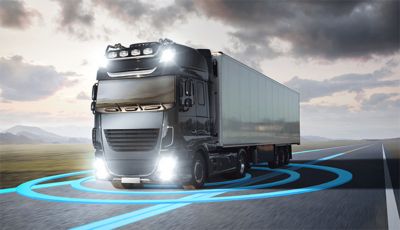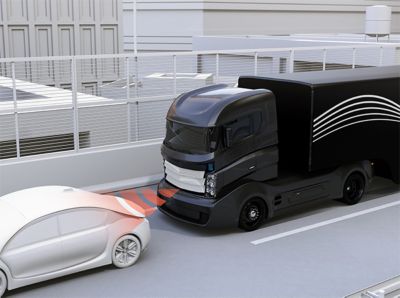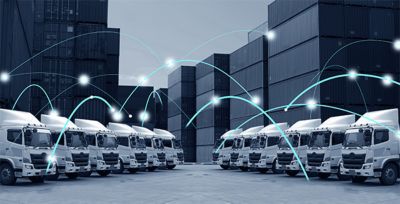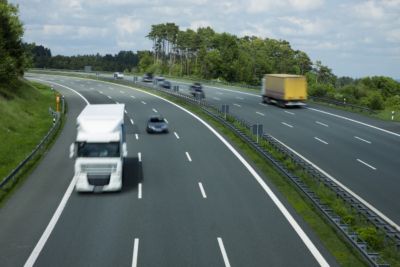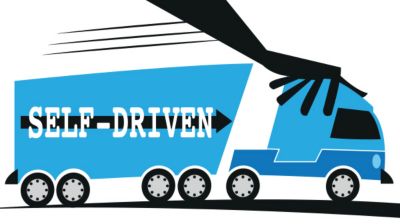-
United States -
United Kingdom -
India -
France -
Deutschland -
Italia -
日本 -
대한민국 -
中国 -
台灣
-
Ansys si impegna a fare in modo che gli studenti di oggi abbiano successo, fornendogli il software gratuito di simulazione ingegneristica.
-
Ansys si impegna a fare in modo che gli studenti di oggi abbiano successo, fornendogli il software gratuito di simulazione ingegneristica.
-
Ansys si impegna a fare in modo che gli studenti di oggi abbiano successo, fornendogli il software gratuito di simulazione ingegneristica.
-
Contattaci -
Opportunità di lavoro -
Studenti e Accademici -
Per Stati Uniti e Canada
+1 844.462.6797
Ansys Blog
December 18, 2019
Everything You Need to Know about Self-Driving Trucks
You can’t just add autonomous car systems onto a self-driving truck and expect it to operate properly.
Sure, autonomous trucks will encounter the same driving conditions as cars. However, due to their weight, size, cross winds, air brakes and trailer hitches, they will need to perform more complex maneuvers than autonomous sedans, coupes, hatchbacks or SUVs.
As self-driving trucks will typically
stick to highways, they may become
mainstream before autonomous cars
Tractor-trailers are heavier and larger than most things on the road. They also use air brakes that handle differently than hydraulic ones. So, just like humans, artificial intelligence systems will require special training to drive these massive vehicles.
Surprisingly, designing a virtual driver for 18-wheelers is a relatively simple problem as they spend most of their time driving on the highway — which is much easier to automate than city driving. As a result, driverless trucks may become mainstream before most city-dwellers get to ride in an autonomous car through a cityscape.
Why Self-Driving Trucks Will Break into the Market Before Autonomous Cars
Virtual drivers will need to learn how to operate cars and trucks better than their human counterparts before they become mainstream.
The biggest challenge for these autonomous systems will be to prepare them for urban roads. These settings are fraught with unexpected situations — something might suddenly run across the street or a distracted driver might run through a red light.
Autonomous trucks won’t be science
fiction much longer. In less than a
decade, they will become science fact
These events are quite uncommon on the highway. Typically, on the highway, vehicles hold their lane, maintain safe distances and are good for hours.
Though accidents can be more catastrophic on highways — due to high speed — they occur less often because highways are isolated from public spaces. Therefore, unexpected events are less likely. As a result, there are fewer scenarios that virtual drivers need to train for to make safe autonomous vehicles for highways.
In fact, we could expect to see highway-ready autonomous systems five years from now. They will need to be calibrated to each vehicle type, but cars and trucks should have them around the same time.
However, shipping companies have financial incentives to roll out the technology quickly as human drivers account for the largest fraction of truck operating costs. So, expect self-driving trucks to become mainstream faster because they can operate 24/7 and will reduce the need for many drivers. There is a reason why U.S. presidential candidate Andrew Yang talks about saving the trucking profession: shipping companies are looking to save $125 billion in labor and fuel efficiencies.
The Logistics of Driverless Trucks
Self-driving trucks will not be able to drive autonomously in urban areas for years after they start driving on highways. So, trucks will need human drivers to travel through city and rural areas. Thus, not all trucking jobs will be eliminated.
But how will it all work? It is called the hub-to-hub model. Large parking lots for trucks will be created next to highways on the outskirts of cities.
Driverless trucks will travel on their
own from parking lot to parking lot.
Humans will take over in local areas
First, the tractor-trailers will drive themselves on the highway from one hub to another.
Once a truck arrives at a hub a human will take the wheel and drive it where it needs to go — locally. They will then bring it back to the hub and move onto driving the load that has arrived. That first trailer will then autonomously drive to another hub.
In other words, after self-driving trucks become a reality the remaining truck drivers may experience a better quality of life — they can stay close to home and family, dropping off a handful of loads in a day.
How Human Drivers Should Drive Around Autonomous Trucks
The best advice is to drive safely. Don’t change your patterns of driving just because a tractor-trailer is devoid of a human being.
It should go without saying, but don’t harass autonomous vehicles.
There have been stories of people trying to fake out these systems when they see them for the first time on the road. People might think it’s okay to bully these systems because, unlike a human, virtual drivers will not retaliate.
How should you drive around an
autonomous truck? Respect it as you
would anything else on the road
Driving like this isn’t safe. Even though the autonomous driving systems can respond safely to aggressive driving, it’s never a good idea. It’s best to share the road.
And don’t forget, these systems are loaded with sensors and artificial intelligence. They can record a human bully’s behavior in full detail and send it to the police.
Biggest Barrier to Driverless Trucks
The biggest barrier to releasing autonomous trucks will be evaluating their safety under all possible conditions.
During development, self-driven trucks will have human drivers to
ensure safety. But they will be phased out as soon as the
technology is proven to be safe
Cars will always have occupants as their primary goal is to move people around. So, someone will be there to take over if something goes wrong.
During development, this will also be true for trucks — a human will be there to ensure everything is safe. However, the primary goal will be to move cargo. So, as soon as autonomous systems are proven to be safe, there won’t be someone behind the wheel much longer.
To validate this level of safety, engineers will need to test the virtual drivers through millions of simulations. Each simulation will test the autonomous systems for safe operation through various scenarios and driving conditions.
To learn in detail how these systems are created and validated, view the webinar: Fast-Tracking Advanced Driver Assistance Systems (ADAS) and Autonomous Vehicles Development with Simulation.











